Snapdragons are a classic in cottage gardens, bringing up the rear in mixed plantings, adding interest to borders, and filling mass plantings with a riot of color.
And do you know what else this perennial favorite can do? It makes a marvelous container plant!

We link to vendors to help you find relevant products. If you buy from one of our links, we may earn a commission.
Whether you opt for a towering display with some tall cultivars or an elegant hanging basket full of colorful crawlers, snapdragons are versatile and tolerant of container life.
We’ll go over what kind of container you need, what sort of soil to fill it with, and how to keep your potted plants perfectly happy. Here’s what you can expect up ahead:
What You’ll Learn
It’s time to start planting, so pull out your gardening gloves and your watering can. We’re off!
The Right Container
Snapdragons have fibrous roots that are neither particularly deep nor very wide. The plants also aren’t typically top-heavy, though long stalks can tip over in the wind.
All this means that you don’t need an extremely large container, but you might want to choose one anyway.
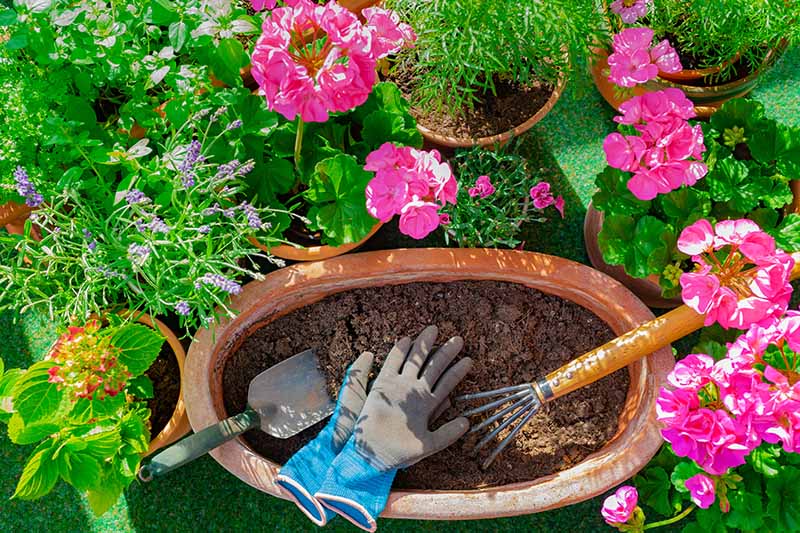
It’s often difficult to keep a small pot watered well and often enough to keep these plants happy.
An eight-inch wide and deep pot is sufficient for a single snapdragon of any size, but you might want to go up a size or two. And, of course, you can increase the size even more if you plan to grow multiple plants together.
It doesn’t matter what material you choose, though plastic might be a bit too light for a tall type of snapdragon.
If you’re growing anything that reaches over 24 inches in height at maturity, go with something heavier like concrete or clay.
Choosing Appropriate Soil
Snapdragons like well-draining, moist, rich, and loose soil, though they’re fairly tolerant of less-than-ideal soil as well.
It can be a challenge to create the perfect soil in your garden beds, but when you’re growing plants in containers, it’s fairly easy to buy the type of soil that these plants will thrive in, or to make your own mix at home.
Choose a premixed medium that is water-retentive and contains a healthy mix of compost and moss or coco coir. De La Tanks Soil Mix is an excellent option, made with compost, coconut coir, and pumice.
You can pick up a one-, eight-, or 16-quart bag at Arbico Organics and make your snapdragons happy.
Finding the Best Location
Snapdragons like lots and lots of sun. Eight hours or more per day is just right.
Having said that, you can put your container in partial shade if you need to. A few hours of shade, particularly in the afternoon, won’t hurt.
If, however, you notice the stems bending towards the light, you need to move the container to a spot with more sun exposure.
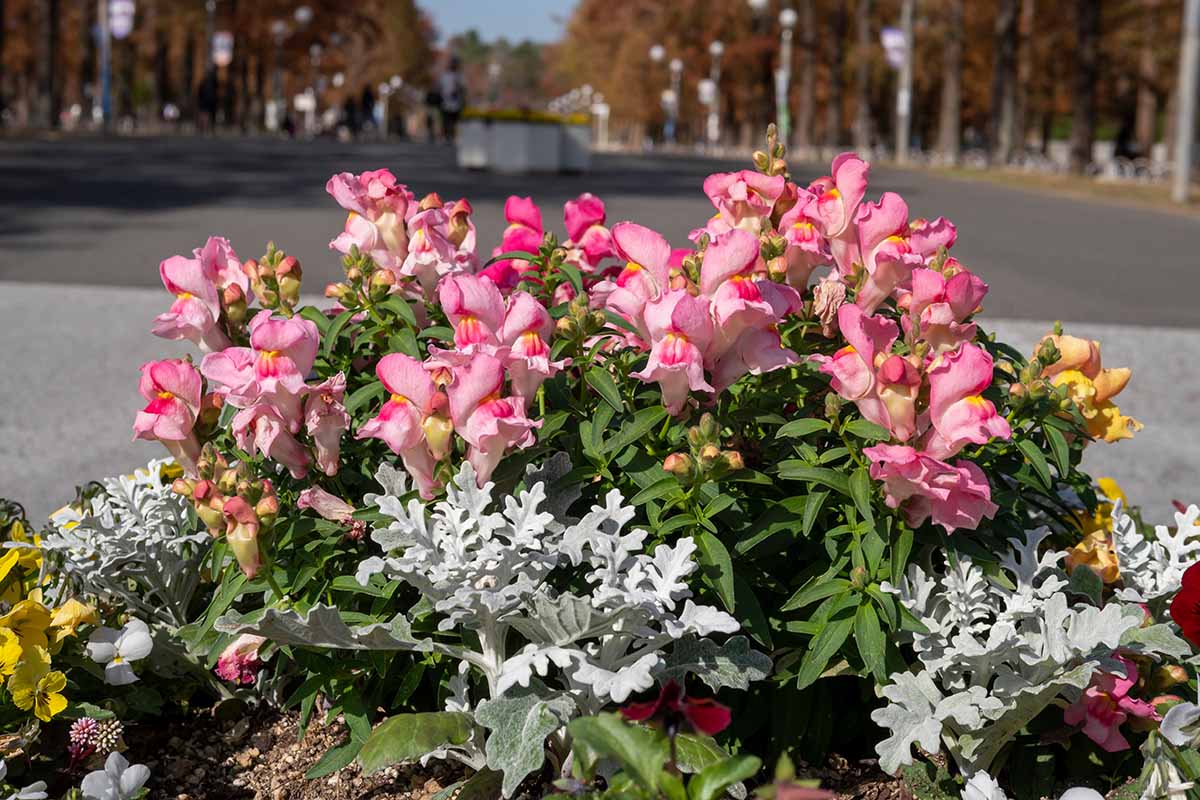
If you have a type that grows more than 18 inches tall, put the container somewhere that it will be protected from wind.
A surprise heavy wind can break stems, but even a constant breeze coming from the same direction will cause the stems to grow crooked.
Depending on the type of snapdragon you have (summer, spring, fall), you might want to keep the container away from walls that will reflect heat.
Brick is particularly adept at reflecting heat onto nearby plants (and people). Spring and fall snapdragons prefer cool temps and they won’t like being near heat.
Learn more about the various types of snapdragons.
Planting in Pots
You have two options when planting snapdragons in your chosen container and soil. You can sow seeds, or plant seedlings.
In season, these are available to purchase at pretty much every nursery (and home goods store, and grocery store…) out there.
Snapdragons grow well from seed, but the process takes longer. Seedlings offer a quicker payoff, but they will cost more.
From Seed
You can start seeds indoors or out, either directly in your chosen container or in seed-starting containers. It’s up to you to choose which method will work best to meet your needs.
Snapdragons need to be started early in the year, about 12 weeks before the last predicted frost date in your area.
To plant, place seeds on the soil surface in a container filled with your chosen medium to within about an inch of the rim. Don’t bury the seeds, just press them on top and spray the soil with a water bottle to moisten the medium.
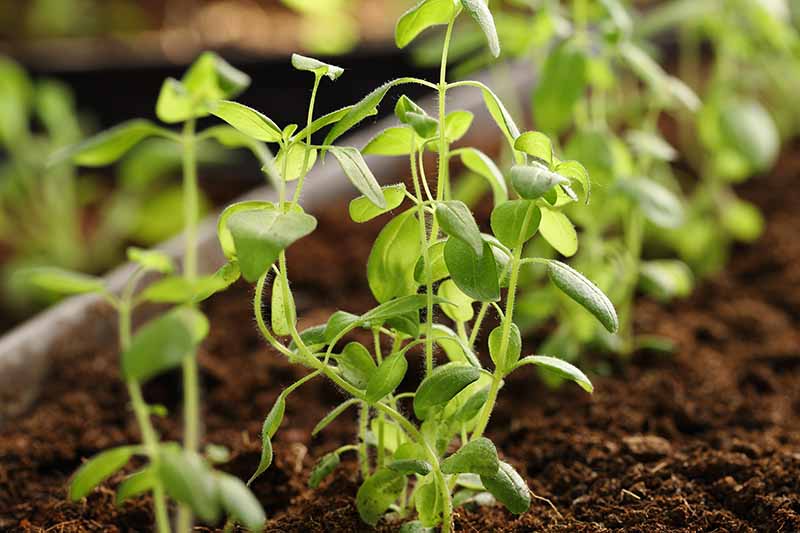
Keep the seeds moist and in an area with bright, direct sunlight. After about two weeks, you should see sprouts. If your seedlings aren’t in an area where they’re receiving at least eight hours of light per day, you can add grow lights.
Once the seedlings are about a month old, harden them off as described below for a week before moving them to their permanent position outdoors.
These plants can handle a bit of frost, so it’s fine to put them out a week or two before the average last frost date for your region if you want.
Read more about starting snapdragons from seed in our guide.
Transplants
Whether you purchased plants or started your own, the first step before moving them to their permanent spot is to harden them off if they haven’t been outdoors already.
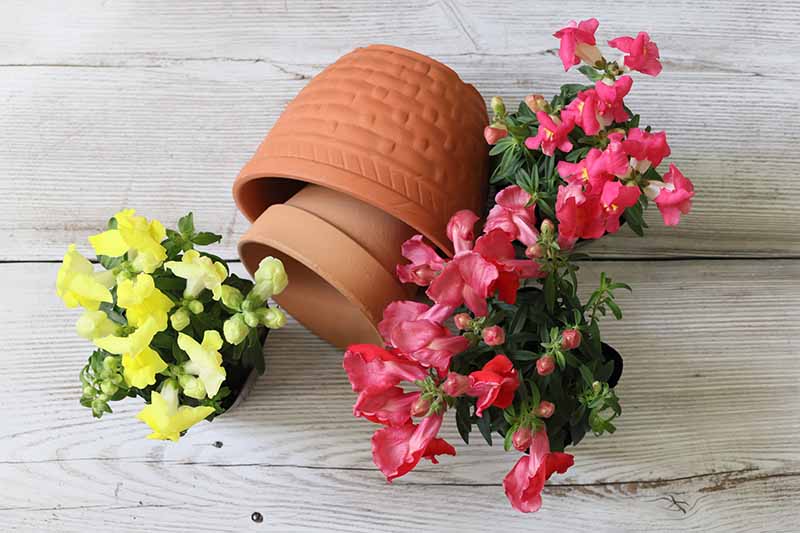
Do this by placing the plant outside in a protected area for an hour. Bring it back inside, and leave the plant outdoors for two hours the next day.
On the third day, bring it back outside for three hours. Keep adding an hour until your snapdragon can stay outside for a full eight hours.
Next, remove the seedling or start from its nursery container and place it in a hole in the new container. The hole doesn’t need to be any larger than the existing root ball. Potting soil is loose enough that the roots should be able to expand easily.
Backfill with soil, and water it in well.
Series and Cultivars to Select
You can grow literally any snapdragon cultivar in a container. That was easy, right? Moving on…
Okay, assuming you’d like a little more guidance with your new potted friends, here are some of the cultivars that are particularly suited to pot life.
Cultivars in the Aroma series have a strong scent, which makes them nice to use in areas where you will be sitting or walking nearby.
‘Black Prince’ is an heirloom cultivar that loves heat, so they’re perfect for a patio that tends to become toasty. The leaves are dark purple, which adds visual interest.
‘Bright Butterflies’ has double flowers with a compact growth habit. They can grow up to three feet tall, but they have thick, sturdy stems so they are less prone to falling over.
‘Brighton Rock’ stands out among snapdragons because of its patterned petals. The bicolor flowers can have stripes, spots, or marbled splotches of contrasting colors. Flowers come in pink, yellow, red, and orange.
If you’re interested in adding this beauty to your container garden, grab a small packet, ounce, or quarter-pound of seeds at Eden Brothers.
Cultivars in the Chandelier series are trailing, so these are ideal for your hanging baskets. Chantilly series plants offer additional trailing options and these are even longer, growing up to 40 inches.
‘Night and Day’ is particularly visually appealing thanks to its bi-color blossoms. The single petals are deep, dark red on the upper parts and white on the lower petals.
It also features a spicy scent and grows about 18 inches tall, making it perfect for a dramatic patio statement.
Pick up a 100 mg pack of seeds for your pots at Botanical Interests.
Sonnet series plants have larger root systems, so they need larger pots. But the larger root system also means they anchor into their containers well, so you’ll have less reason to worry about them tipping over.
Tahiti is a dwarf-type series with plants that can reach up to nine inches tall, perfect for the smallest spaces.
Want More Options?
Be sure to check out our supplemental guide, “23 of the Best Snapdragon Varieties to Grow at Home.”
Maintaining Your Potted Plants
If you’ve ever cared for snapdragons in the ground, you can definitely handle growing them in a pot. They don’t take any special consideration except that you need to be more diligent about watering.
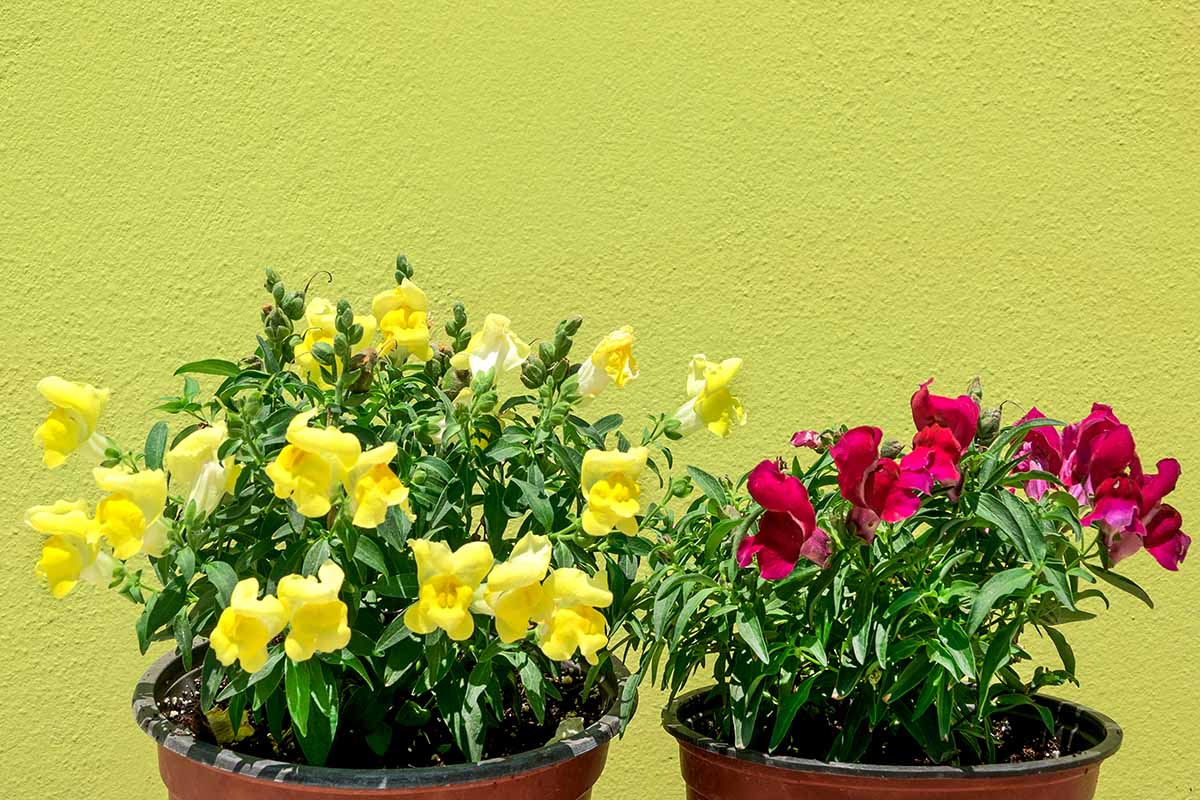
The top inch of the soil can dry out in between watering, but no further. Some gardeners opt to use drip irrigation in their containers, and this is especially smart if you live somewhere particularly warm and dry.
As you might with plants growing in the ground, pinch the plants when they’re young to encourage bushier growth. You can also cut flowering stems to encourage new ones to form.
You can also consider moving them inside once temperatures start dropping. Since snapdragons are short-lived perennials, you can overwinter them with some protection and get a couple more years out them.
Pots Bring the Beauty of Snapdragons Closer to You
Pots allow you to bring the plants you love closer to your home or the areas where you like to hang out. But it’s not always easy to find flowers that thrive in pots. Snapdragons to the rescue! They don’t mind the container life.

What type of snapdragons are you growing? Where are you keeping your containers? On a patio near the home for some accent color? In a hanging basket on your porch? Let us know in the comments!
And for more information about growing snapdragons, have a read of these guides next:
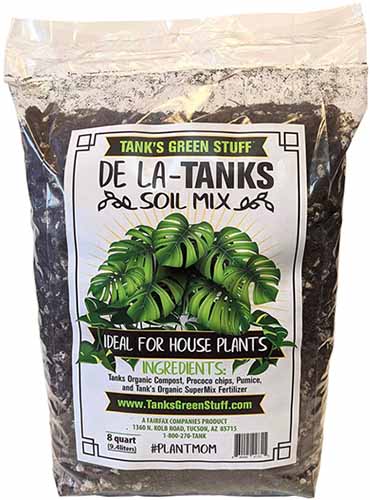
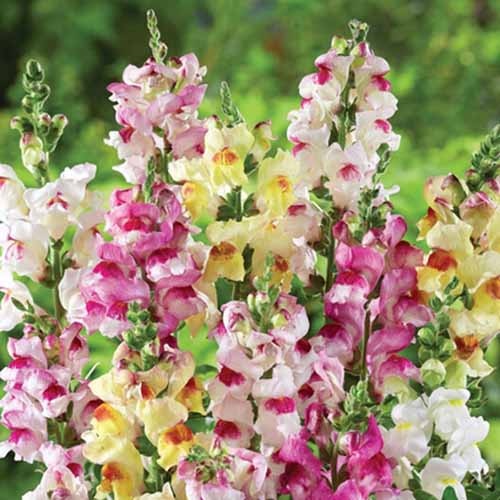

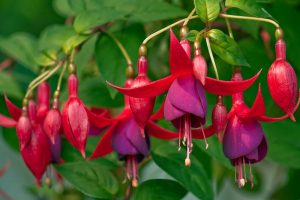

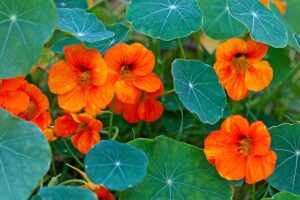
It was great to learn that snapdragons should not dry out in pots. Thanks for the tip and the others!